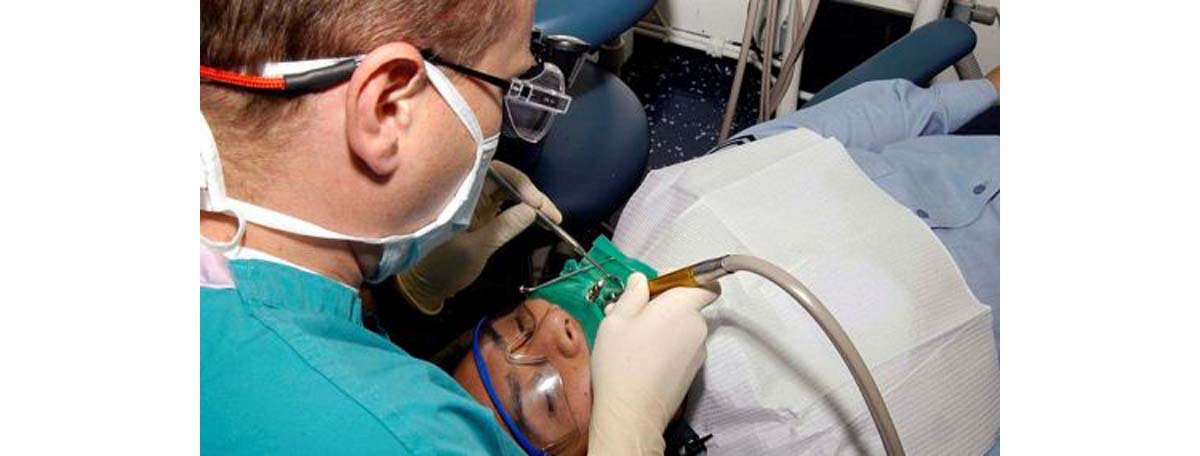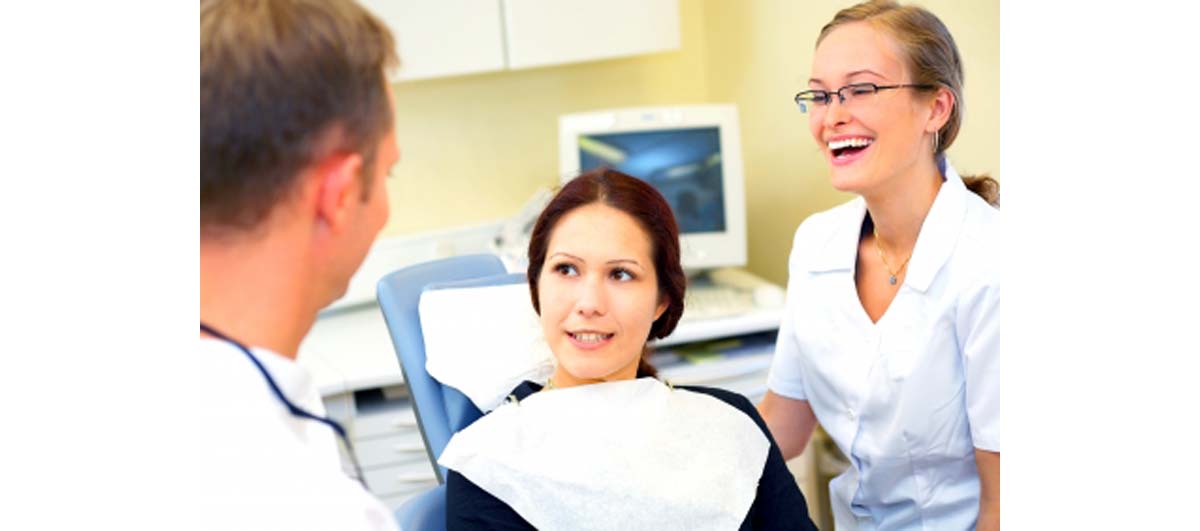If you live in the United States and you watch any of the national news programs, you could not have missed the story of the Tulsa, Oklahoma dentist, Dr. W. Scott Harrington, whose sloppy office practices may have exposed up to 7,000 of his patients to HIV, hepatitis C, and other blood-borne infections.

Executive director of the Oklahoma Board of Dentistry Susan Rogers told the Los Angeles Times that Dr. Harrington's practice was the "perfect storm" for massive transmission of infectious disease:
- Many of Dr. Harrington's patients in Tulsa and suburban Owasso, Oklahoma, are known to be already at high risk for HIV and viral hepatitis.
- Dr. Harrington specialized in oral surgery, including pulling teeth, and other procedures involving heavy bleeding.
- The dentist allowed his assistants to perform procedures that require puncturing veins, such as the administration of intravenous (IV) anesthetics.
- Inspectors from the Board of Dentistry raiding the offices found rusty surgical instruments and evidence that dental tools were cleaned with bleach, which erodes the stainless steel surface of the sharp instruments and creates cavities in which bacteria can accumulate.
News reports state that Harrington has been criminally charged with 17 counts of performing dentistry in an unsafe or unsanitary manner that could endanger public health. The investigation of Dr. Harrington was triggered by a report that one of his patients who was not in a high-risk group for HIV had tested positive for the disease, although the test was later discovered to be a false positive. To date, only one of Dr. Harrington's patients has officially tested positive for an infection likely to have been acquired in the office. This patient has hepatitis C.
The Need for Universal Precautions
Dr. Harrington's case may be the worst incident of dentist-caused infections, but it is not the first. In the late 1980's and 1990's, a Florida dentist named David Acer was found to have infected six of his patients with HIV. The Florida case led to the imposition of Universal Precautions on dental practice. As a result of the six cases of HIV, dentists are now required to wear face masks, gloves, and face shields, protecting both them and their patients from blood.
Dr. Harrington had been practicing dentistry for over 16 years before Universal Precautions became standard practice in the profession. However, it's not possible that he just "didn't get the memo." The move for Universal Precautions began in the mid-1980's, a number of years before the infamous Acer case in Florida.
Ten Tips For Recognizing A Safe Dentist
What precautions should you expect your dentist to take to protect you from catching infections from other patients, or the dentist himself or herself? Here are ten things to look for when you are at the dentist's office.

1. Your dentist should not be a vaccine protestor.
Maybe it's OK if you don't get your flu shot, but it's not OK if your dentist and your dentist's staff don't get theirs. Because dentists and dental hygienists have the potential to infect dozens or even hundreds of people if they come down with the flu, it's a Centers for Disease Control requirement that they get annual vaccinations.
2. Your dentist and his or her assistants should pass dental instruments with sharp edges pointed away from you.
Any cutting edge of a dental instrument should be pointed away from human flesh when it is being passed from assistant to dentist. Of course, the cutting edge will be applied in your mouth, but it dentist and staff should take care not to inure you or themselves.
3. Syringe needles should be capped between injections, and only one patient should treated with each syringe.
One of the accusations made against Dr. Harrington of Oklahoma infamy is that he re-used syringes between patients. It's OK to use the same syringe to give injections to the same patient during the same procedure, but the syringe should be new, capped with a one-handed "scoop" motion between uses, and discarded safely at the end of the visit.
4. There should always be a barrier between you and your dentist, and between you and your dental hygienist.
Dentists and hygeinists should always wear face masks when working on your teeth or gums, and a face shield is required for surgical procedures.
5. Your dentist should inquire whether you are allergic to latex.
At least on your first visit to a dentist's office, you should be asked if you have any allergies. This includes allergies to latex, especially important since the doctor may be wearing latex gloves while working in your mouth.
6. Your dentist should change gloves between patients.
This is a no-brainer, but it's surprising how often hurried dentists forget. If you never see your dentist putting on gloves when entering the room to treat you, don't be afraid to ask why. Gloves should never be washed, sterilized, or otherwise treated for re-use. They are used once and then thrown away. Double-gloving is not necessary to prevent transmission of infection.
7. Hands should be washed with soap and water between patients.
Look for evidence of handwashing in the dentist's office. Hands should be washed with soap (it does not have to be antimicrobial) between patients and whenever they become soiled with blood or tissue.
8. Dentists should never wear artificial nails.
Artificial nails and nail jewelry interfere with putting on gloves, and can tear gloves.
9. Reusable surgical instruments should be sterilized with heat, not chemicals.
Bleach, as mentioned in the Harrington case, can cause damage to surgical instruments, rusting them, and forming nooks and crannies in which bacteria can hide.
10. Floors, walls, sinks, and other housekeeping surfaces need to be clean, too.
The dentist's office must be cleaned each and every day, although ordinary household cleansers are adequate if no blood has been spilled. Mops and cleaning cloths should never be allowed to stand in a bucket between use. They should be thrown away after a single use, or allowed to dry out between uses.
- Puttaiah R, Miller K, Bedi DR, Shetty S, Almas K, Tse E, Kim BO, Youngblood D, Minquan D. Comparison of knowledge, attitudes and practice of dental safety from eight countries at the turn of the century. J Contemp Dent Pract. 2011 Jan 1.12(1):1-7.
- Scully C, Haj M, Porter S. Infection control in dentistry. BMJ. 1993 Jun 26.306(6894):1754.
- Photo courtesy of on Flickr:
- Photo courtesy of on Flickr:

